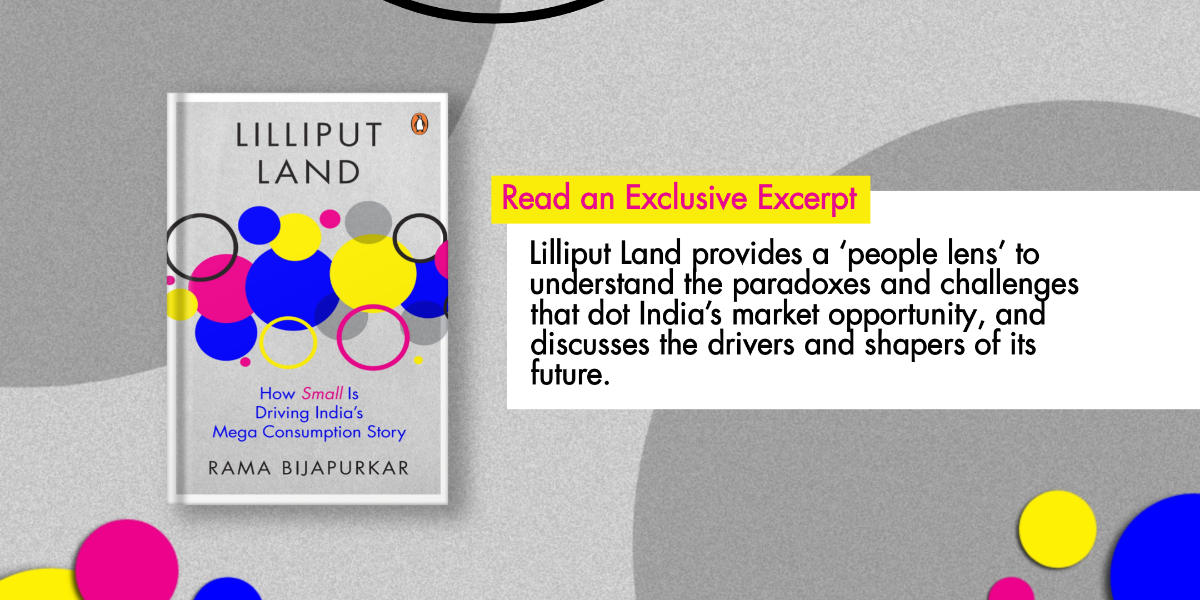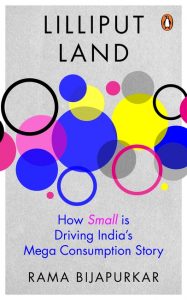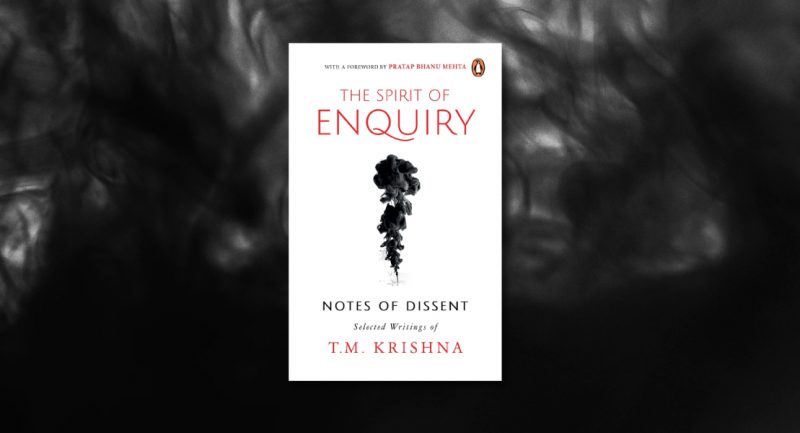
Discover the intricate world of consumer India in Lilliput Land by Rama Bijapurkar. Explore the aspirations and attitudes towards credit that shape consumer India’s behavior and learn through the many valuable insights for businesses navigating this dynamic market amidst India’s digital revolution.
Let the Mega Consumption story begin!

Lilliput Land
Rama Bijapurkar
***
A lot has been written about this in media stories and books, and ‘the changing Indian consumer’ is a favourite conference topic. However, given the structure story of the many Indias, all these anecdotes and observations of how different parts of the elephant behave need to be distilled into a holistic view of the nature of the beast. This chapter looks at key shapers of behaviour—aspiration, dignity, Indian identity, brand orientation, the phenomenon of monster consumers, how to understand and navigate heterogeneity of the market for strategy development, and how to read change in the confusing way in which Consumer India changes. Shapers of Consumer India’s Consumption Behaviour A macro-consumer view of the people of India Consumer India, as the previous chapter on structure has demonstrated, is a fragmented and complex hydra-headed monster, based on just its economy, demographics and living conditions. Add to that a layer of different social and cultural factors aff ecting diff erent parts of Consumer India (including community, region, politics and language), and diff erent levels of exposure to diff erent worlds outside, it gets even more complex. Requests asking me to speak on the topic of ‘Indian Consumer Behaviour’ or ‘Changing Consumer Behaviour in India’ terrify me. How does one capture the enormity of behaviour variations in Consumer India? No matter what one could say, the opposite would also be true in some audience members’ recent experience! Therefore, for reasons of both prudence and competence, this chapter will not attempt the near-impossible task of chronicling diff erent kinds of consumer behaviour and diff erent patterns of consumption.
The focus of this chapter will instead be on understanding the lives, mind spaces and attitudes that shape the behaviour of the people who comprise Consumer India. This is useful because consumption and brands do not live in the narrow confines of a market space but exist as a part of the larger canvas of people’s lives. Serving a consumer base without understanding what makes it tick does not make for winning businesses, sound market strategies or creating brands that deeply resonate with consumers.
This chapter has three sections:
1. Shapers of Consumer India’s consumption behaviour: A few important themes that are common and relevant to all income groups.
2. Structure and drivers of heterogeneity in Consumer India and how to think about consumer segmentation.
3. How India changes and reading change in Consumer India.
As everywhere in this book, this chapter will also examine many of the commonly held hypotheses and theories about Consumer India to test their validity and change, nuance or caveat them as the case may require.
Section I:
Shapers of Consumer India’s Consumption Behaviour This section identifies and explores a few important themes that are common across all of Consumer India and shape the consumption behaviour of all income groups. A Tectonic Shift from Acceptance to Aspiration, Facilitated by Credit.
Aspirational India is a tectonic shift from the pre-liberalization days when we would often hear consumers of lower-income groups tell us in focus groups, ‘This is not for me, this is for the badey log (big people).’ Now, there is a strong statement of, ‘I want to have something like that, be it products or experiences.’ A car is obviously not affordable, but a bike and a taxi for special family outings is. Now, having what celebrities have has become easy with social media. Copies of actress Alia Bhatt’s mehendi pattern and cheap knock-offs of her wedding dress are available. Influencers and beauticians of every social class tell you how to use make-up like celebrities do and style yourself at a price point that you can afford. As ad man Santosh Desai puts it, the big shift is that ‘life is not a condition to be endured but a product to be experienced’. Aspiration-led living is the opposite of the way it used to be. The attitude and mindset shift is from ‘this is what I have and how do I manage best within it’ to ‘this is what I want, so how do I manage to get it’. We see this resulting in choices which can best be described as ‘stretch for more, do not settle for less’. Borrow and buy the higher category car or two-wheeler or buy a second-hand one rather than settle for the easily affordable small car, even if it means waiting a bit, buying a pre-owned vehicle or taking a loan.
Credit or borrowing for consumption once considered a very dangerous thing, is now acceptable and ‘normal’ to Consumer India. Amazon and consumer durables stores and travel sites helpfully ask you, at the time of checking out, if you want to pay by EMI, that is, equated monthly instalments of credit. Credit is also morally purified. Its cultural label has changed from indebtedness, which can lead to ruin, to being the working capital for life and the helping hand that everybody needs to reach their goals. Financial services companies have been exploiting this attitude shift leading to the regulators and the courts coming down hard and framing laws to curb irresponsible lending that leads to imprudent borrowing, and strong-arm tactics for recovery that lead to customer stress and even suicides. An example of this is what happened to the microfinance industry in 2010 leading to a new law in 2011 that banned MFIs from approaching the doorstep of their customers, lengthened the loan collection cycles and told lenders that they had to get government approval to give a second loan to the same lender. The Reserve Bank of India, India’s banking regulator has issued a charter of customer rights for banks and non-banking financial services companies (NBFC) that includes the ‘right to suitability’, where ‘only products and services that are appropriate to the understanding and financial conditions of the customers may be offered to them.’ It is a caveat venditor (let the seller beware) as far as enforcing this right is concerned.
***
Get your copy of Lilliput Land by Rama Bijapurkar wherever books are sold.









